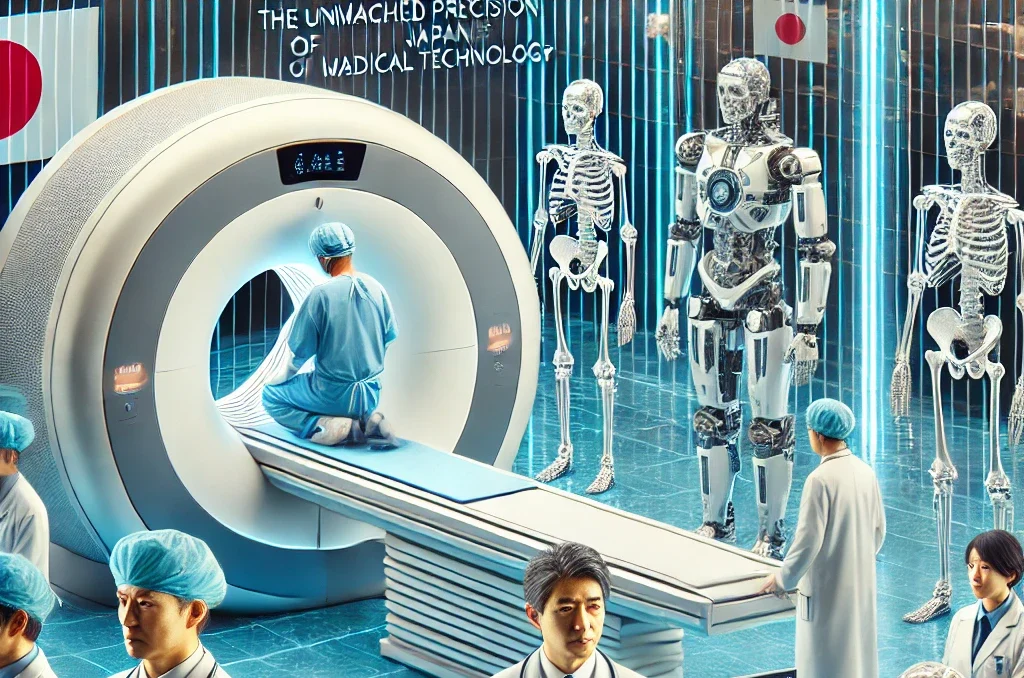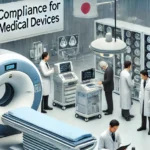

The Unmatched Precision of Japanese Medical Technology
Japan has long been synonymous with innovation, precision, and excellence in technology. From robotics to automotive engineering, the nation’s ability to blend tradition with cutting-edge advancements is unparalleled. Nowhere is this more evident than in the field of medical technology, where Japan has emerged as a global leader. With a healthcare system renowned for its efficiency and a culture that values meticulous attention to detail, Japanese medical technology stands out for its precision, reliability, and transformative impact on patient care. This article explores the key factors behind Japan’s dominance in this field, the groundbreaking technologies driving its success, and the global implications of its innovations.
A Foundation Built on Precision and Discipline
At the heart of Japan’s success in medical technology lies its cultural emphasis on precision and perfection. The Japanese concept of kaizen—continuous improvement—permeates every aspect of its industries, including healthcare. This philosophy has fostered an environment where even the smallest details are refined to achieve optimal outcomes. In medical technology, this translates to devices and systems that are not only highly accurate but also exceptionally reliable, reducing the margin for error in critical healthcare settings.
Japan’s healthcare system itself is a testament to this precision. With one of the highest life expectancies in the world—averaging 84.6 years as of recent data—the country has invested heavily in ensuring its population receives top-tier medical care. This commitment has driven the development of technologies that address both preventative and curative needs, from early diagnostic tools to advanced surgical systems. The synergy between a robust healthcare infrastructure and technological innovation has positioned Japan as a pioneer in the global medical landscape.
Cutting-Edge Innovations in Japanese Medical Technology
Japanese medical technology spans a wide range of applications, each marked by an extraordinary level of sophistication. Some of the most notable advancements include robotic surgery systems, diagnostic imaging, and wearable health devices.
-
- Robotic Surgery Systems
Japan is a leader in the development of robotic-assisted surgery, with systems like the da Vinci Surgical System and homegrown innovations such as the hinotori surgical robot. These technologies allow surgeons to perform complex procedures with unprecedented precision, minimizing invasiveness and accelerating patient recovery. The hinotori system, developed by Medicaroid Corporation, exemplifies Japan’s ability to tailor technology to specific medical needs. Its compact design and advanced imaging capabilities enable surgeons to operate with enhanced dexterity, even in confined spaces, making it a game-changer for procedures like prostatectomies and gynecological surgeries.
- Robotic Surgery Systems
-
- Diagnostic Imaging
Japan’s contributions to diagnostic imaging are equally impressive. Companies like Canon, Toshiba, and Hitachi have revolutionized medical imaging with technologies such as high-resolution MRI scanners, CT systems, and ultrasound devices. These tools provide clinicians with detailed, real-time insights into the human body, enabling early detection of diseases like cancer and cardiovascular conditions. For instance, Canon’s ultra-high-resolution CT scanners deliver images with such clarity that they can detect abnormalities at a microscopic level, offering a significant advantage in preventative care.
- Diagnostic Imaging
-
- Wearable Health Devices
In the realm of personal healthcare, Japan has pioneered wearable devices that monitor vital signs with remarkable accuracy. Devices like Omron’s blood pressure monitors and smartwatches equipped with ECG functionality empower individuals to take charge of their health. These wearables are designed with user-friendliness in mind, reflecting Japan’s knack for combining advanced technology with practical application. Such innovations are particularly valuable in an aging society like Japan’s, where managing chronic conditions is a growing priority.
- Wearable Health Devices
The Role of Collaboration and Research
Japan’s success in medical technology is not solely the result of individual ingenuity; it stems from a collaborative ecosystem that unites government, academia, and private industry. The Japanese government has played a pivotal role by funding research and development initiatives, such as those under the Ministry of Health, Labour and Welfare (MHLW) and the Japan Agency for Medical Research and Development (AMED). These organizations support projects that push the boundaries of medical science, from regenerative medicine to artificial intelligence (AI) in diagnostics.
Universities and research institutions, such as the University of Tokyo and Osaka University, contribute by training the next generation of engineers and scientists while conducting groundbreaking studies. Meanwhile, private companies like Fujifilm, Sony, and Panasonic leverage their expertise in electronics and materials science to create medical solutions. Fujifilm, for example, has transitioned from its photography roots to become a leader in endoscopic systems and AI-driven diagnostic tools, showcasing the adaptability of Japanese firms.
This collaborative spirit extends internationally as well. Japan frequently partners with global healthcare leaders to refine its technologies and ensure they meet diverse needs. Such partnerships have accelerated the adoption of Japanese medical innovations worldwide, from hospitals in the United States to clinics in Southeast Asia.
Addressing Global Healthcare Challenges
Japan’s medical technology is not just a domestic triumph—it’s a response to global healthcare challenges. With an aging population that exceeds 28% over the age of 65, Japan faces unique pressures to innovate in eldercare and chronic disease management. Technologies like robotic exoskeletons, developed by companies such as Cyberdyne, assist with mobility and rehabilitation, offering solutions that are increasingly relevant in other aging societies.
Moreover, Japan’s focus on precision has implications for global health crises. During the COVID-19 pandemic, Japanese firms rapidly developed diagnostic kits and ventilators, demonstrating their ability to adapt to urgent needs. The precision of these tools ensured accurate testing and effective treatment, reinforcing Japan’s reputation as a reliable partner in healthcare innovation.
The Future of Japanese Medical Technology
Looking ahead, Japan shows no signs of slowing down. The integration of AI and machine learning into medical devices promises to further enhance diagnostic accuracy and treatment personalization. For example, AI-powered systems are being developed to analyze medical images faster and with greater precision than human clinicians, potentially revolutionizing fields like oncology and neurology.
Regenerative medicine is another frontier where Japan excels. The country’s approval of induced pluripotent stem cell (iPSC) therapies, pioneered by Nobel laureate Shinya Yamanaka, has opened doors to repairing damaged tissues and organs. This technology, combined with Japan’s expertise in robotics and imaging, could redefine how we approach degenerative diseases and traumatic injuries.
Sustainability is also on the horizon. Japanese companies are exploring eco-friendly materials for medical devices, aligning with global efforts to reduce healthcare’s environmental footprint. This forward-thinking approach ensures that Japan’s innovations remain relevant in an increasingly conscientious world.
Conclusion
The unmatched precision of Japanese medical technology is a testament to the nation’s ability to harmonize tradition, innovation, and human-centric design. From robotic surgery to wearable health monitors, Japan’s contributions have elevated the standard of care both domestically and globally. As the world faces evolving healthcare challenges, Japan’s commitment to excellence positions it as a beacon of hope and progress. With a future shaped by AI, regenerative medicine, and sustainable practices, Japanese medical technology will continue to set the benchmark for precision and reliability, improving lives one innovation at a time.
Add a comment Cancel reply
Related posts


Regulatory Compliance for Refurbished Medical Devices

New vs. Refurbished Medical Devices: Making the Decision

Refurbished Surgical Instruments from Japan: Precision, Quality, and Value
Japan Address
COMFYS JAPAN LLC, R Cube Aoyama 3rd Floor, 1-3-1 Kita-Aoyama, Minato-ku, Tokyo 107-0061,Japan
Africa Address
Comfys International Limited KP Offices, Suite 26 Milimani, Nairobi, KENYA




